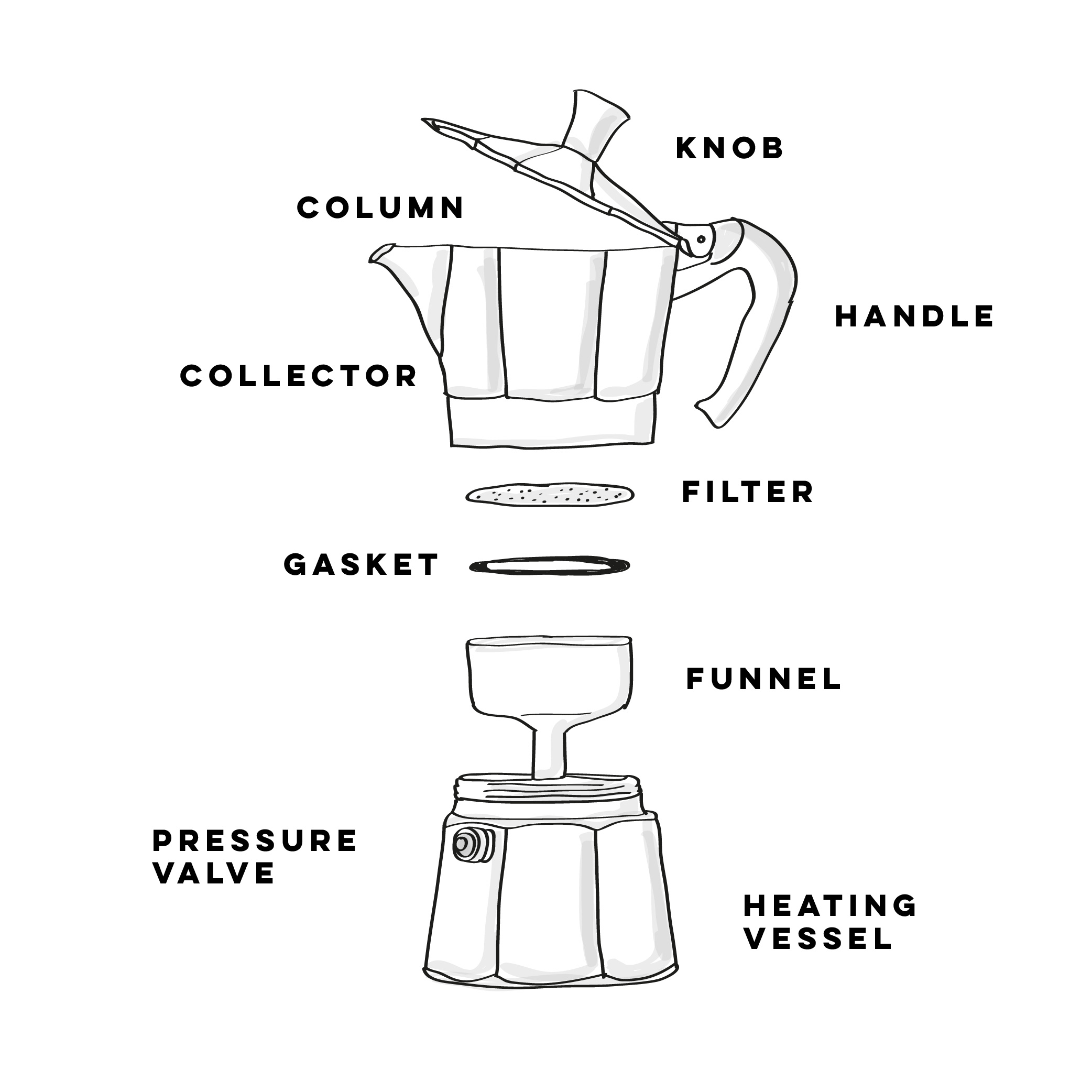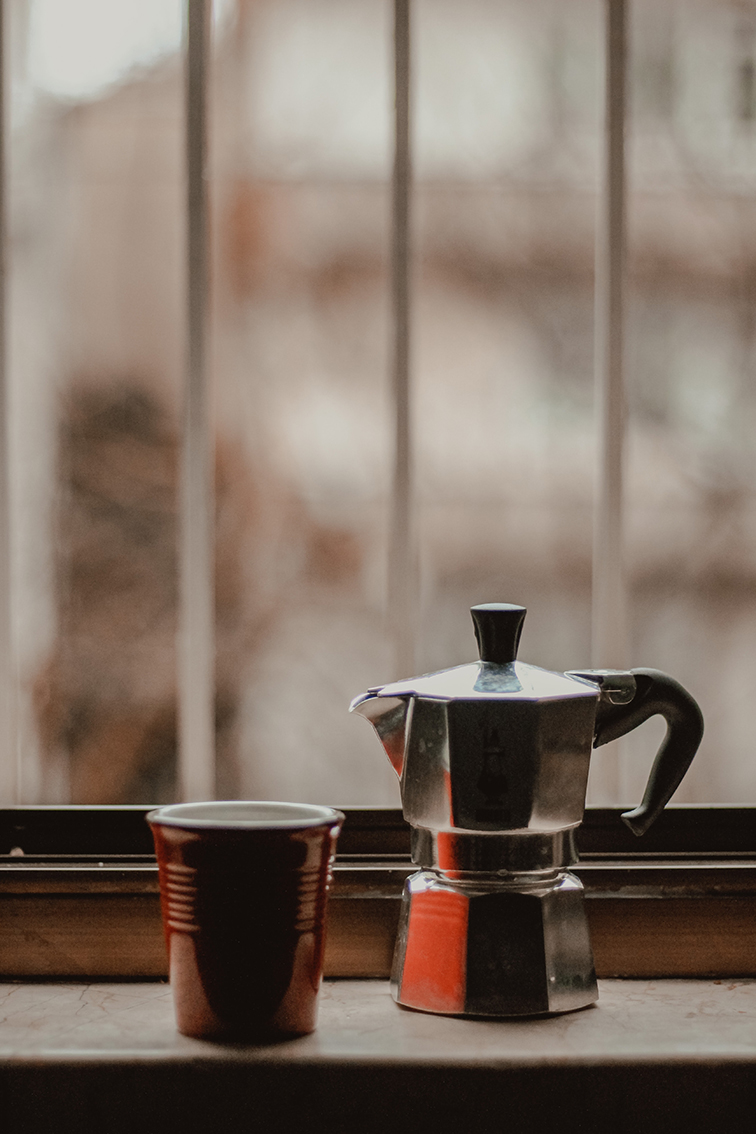MOKA
Hello, coffee lovers! We are back with our home brewing coffee tips! Today we are going to tell you a bit more about the moka pot!
It is a low pressure method invented by Alfonso Bialetti in 1933.
Its enormous success is due to the price and the compact and resistant design, two elements that have made the Moka one of the most used home methods to extract a coffee.
Due to its operation, the water in the kettle heats up to temperatures that sometimes exceed 100 degrees, extracting bitter compounds in the coffee, that is why it is important to know a few tricks how to brew it properly!
First of all
- Make sure your Moka is certified, in most cases an uncertified Moka can leave heavy metal residue in the coffee.
- Before its first used for the first time, clean the Moka with water and bicarbonate to disinfect the boiler. Make two extractions before preparing the first coffee suitable for consumption.
- Always check that the filter is clean and that there are no coffee residues that obstruct the passage of water.
- The joint must always be clean and in optimal condition, otherwise the pressure force will be less at the time of extraction.
- Clean the heating vessel with a decalcifier, for home use you can also do with vinegar, just be really sure to clean it well after, so it doesn’t leave vinegary flavour.
- Make sure that the coffee collector where coffee comes out is always clean, otherwise the coffee oils will oxidise and give a rancid flavour to coffee.
How does it work?
The extraction of coffee with this method occurs due to the pressure that is generated in the water vessel and not due to the boiling of the water.
The bottom part contains water and air, when the temperature begins to rise, the air begins to expand pushing the water up through the filter holder. Increasing the temperature, the water begins to evaporate and the steam pressure helps the water to rise.
Once the water comes in contact with the coffee, the coffee in the filter expands (pre-infusion) and its porosity decreases requiring a higher pressure and temperature to be able to rise to the collector.
This means that the temperature of the first extraction phase and the last one will never be the same.
Once the water in the boiler is lower than that of the filter funnel, the pressure in the boiler decreases, sending the boiling water which, together with the steam, rises throughout the Moka to the collector.
The boiling temperature of the water over-extracts the coffee and could give us bitter, burnt or astringent flavours, it is advisable to turn off the fire before the water boils and let the coffee come out slowly in the upper container.
Preparation
- Heat the water beforehand and fill the kettle up to the pressure valve with the hot water – this way we will reduce the extraction time and the time of contact for the coffee with the metal.
- Place the coffee in the filter, without pressing it down and without exceeding the quantity.
- Place the Moka over low heat so that the pressure rises gradually and the boiling point of the water is delayed as much as possible.
- Once the coffee is out, mix it before serving, so you have a homogenous brew in each cup.
Some important tips
- During the extraction phase, keep the lid of the Moka open to avoid an excessive increase in temperature.
- Another way we can control the excessive increase in temperature in the ground coffee and avoid bitterness is to wet the coffee in the filter before with very little cold water (pre-infusion) and proceed normally with the extraction.
- For a cleaner cup, a paper filter can be used between the filter and the ground coffee (you can take one filter from Aeropress).
- If the water is boiling and nothing is coming out, put the bottom part of the moka pot under cold running water to lower the temperature and then put it on low fire again.










